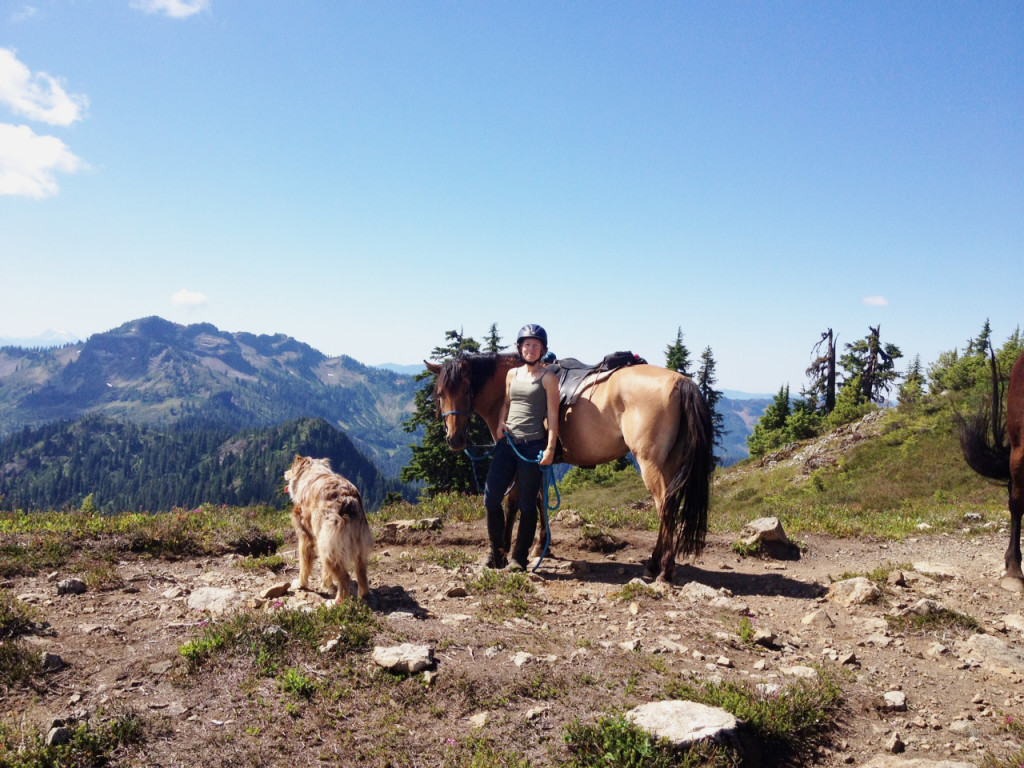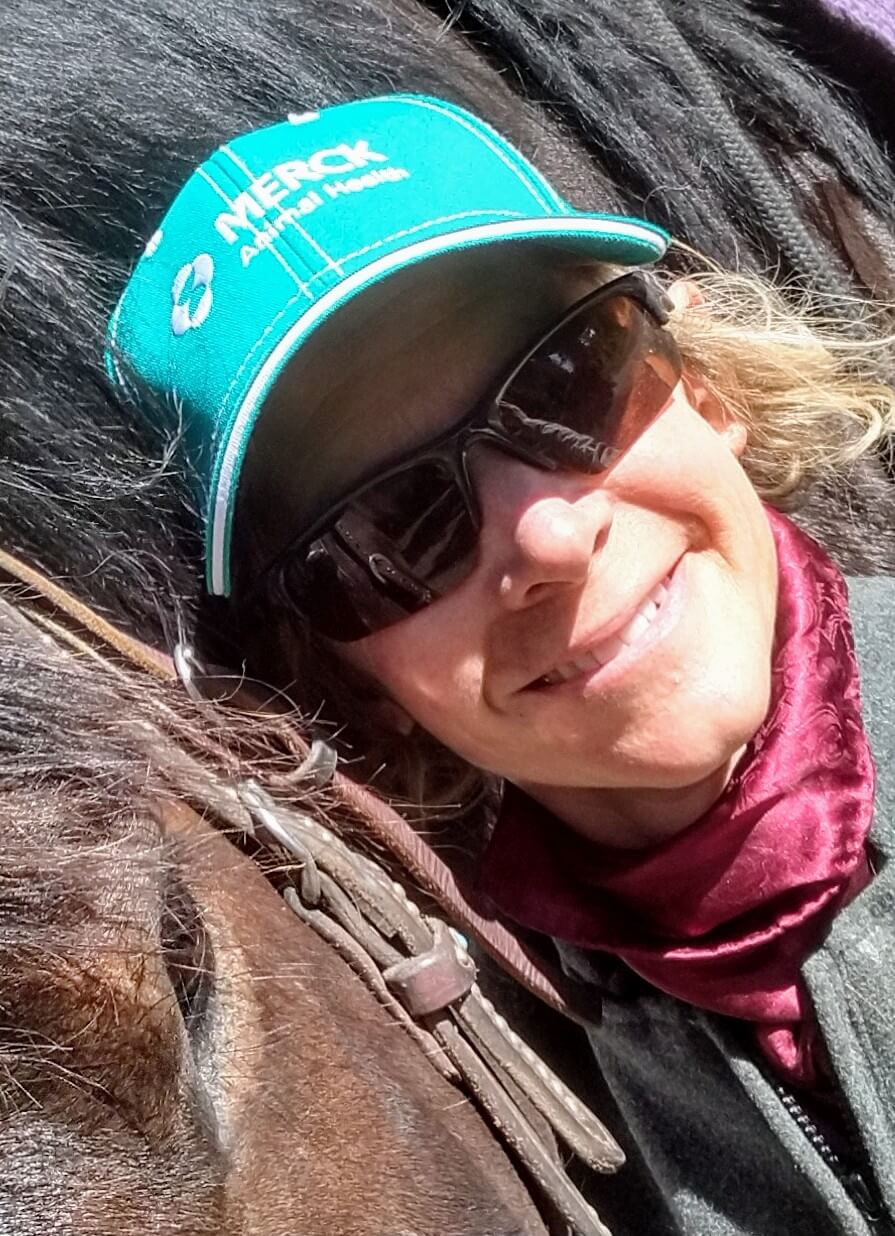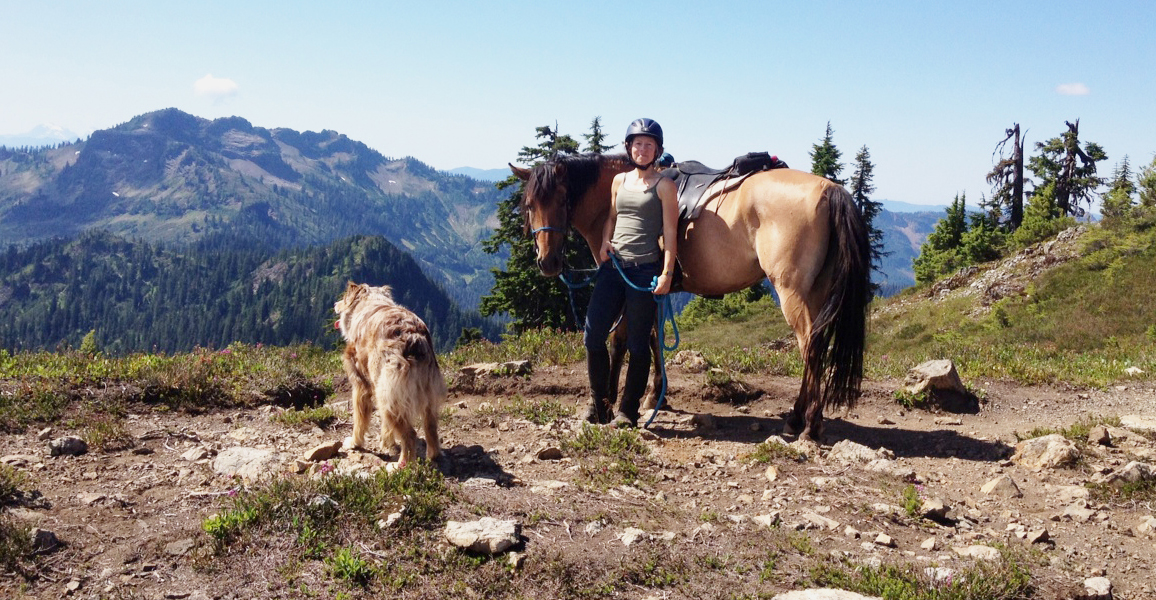by Laura Schonberg

When I first started riding at six years old, I went to the barn because I wanted to ride. It didn’t matter how inclement the weather, how the tack fit, which horse I had to ride, or how that horse felt about it all. We simply rode—the faster the better. As a “tweener” in my double digit years, I not only went fast, I started going up. So not only was I very forward on my mount, we began hurtling over obstacles. Safety wasn’t a big consideration. I thought my riding life was great and figured it could get no better.
As I approach the mature years of life I’ve not slowed down mentally, but I have slowed down physically. While I still love to go fast, and up, in all kinds of weather I have learned to respect and appreciate the mental state of my horse. This means a certain amount of patience with horses is necessary. Sometimes I have to go slow to go fast.
I often don’t have time to do “big” things with my horse so I do lots of little things in an effort to develop a “feeling” mount that will be safe to ride and carry me through the adventures I still want to have on horseback. With all my horses, a major goal is to fine tune the many details that make up a well broke horse. These include my horses’ manners, attitude, movement, and level of responsiveness. It all comes back to the feet and where they are moving, or not moving.
One of my greatest challenges with my little mustang mare, Poema, has been getting her to stand. And when I say stand, it’s literally standing: all feet planted, relaxed, mouth and head quiet. In order to get to this point, the key components of waiting, softness and readiness all apply. These “small” things aren’t unimportant.
Waiting. Poema is an impulsive young horse; she has a highly developed sense of self-preservation. Unfortunately, it took me a long time to realize that often, when she was standing, she would move off in a rush when asked because she had been worried about her own well-being. I needed to take the time to consider where I was standing around other horses—whether in an arena, or at home—so that she was comfortable to wait.
Softness. When I was able to get Poema feeling safe with me in different locations, it was time to consider softness. When I asked for her head to bend, a hind or front foot to move, or for her hind to disengaged, was she aware of me, or did she have her attention elsewhere? Was there a brace when I picked up on the lead line? Working with Poema on softness took patience and time, doing small things every day in her halter. These included the act of haltering, a two minute walk down the driveway with stops and starts, leading her between other horses and going through gates. This amounted to hundreds of repetitions to get her moving off my “feel” when I asked for a step forward, back, or to move laterally.
Readiness. Readiness can be defined as being able and willing. With Poema, we had to work on both for waiting. When we started, she wasn’t able or willing. With her concern for safety, impulsive nature, high reactivity and very distracted mental state her attention was always on other horses. It didn’t matter if they were two feet, two acres, or two miles away. I had to become willing to slow down and provide opportunities for her to move her feet productively (forwards, backwards, side to side with her front and hind). This prepared her to be ready to stand patiently. First she could only stand two seconds. This extended to a minute, standing when mounted and also waiting while I was seated in the saddle.
Take the time and effort to do these small exercises; they build on themselves and have enormous payoffs in the future. A patient horse, willing to wait, is the horse that will be safe when enjoying that forward riding many of us like to do.
Published in October 2015 Issue

Thankful to call the Pacific Northwest home, Laura Schonberg is an educator in a local school district and is outside at her place when she isn’t inside at work. Summers are spent cow-girling at a friend’s ranch, with forrays into the Cascade Mountains as time and weather permit year-round. Winter finds her at a local barn doing dressage lessons to support her ranch riding, and re-starting horses through the county’s equine rescue program.






